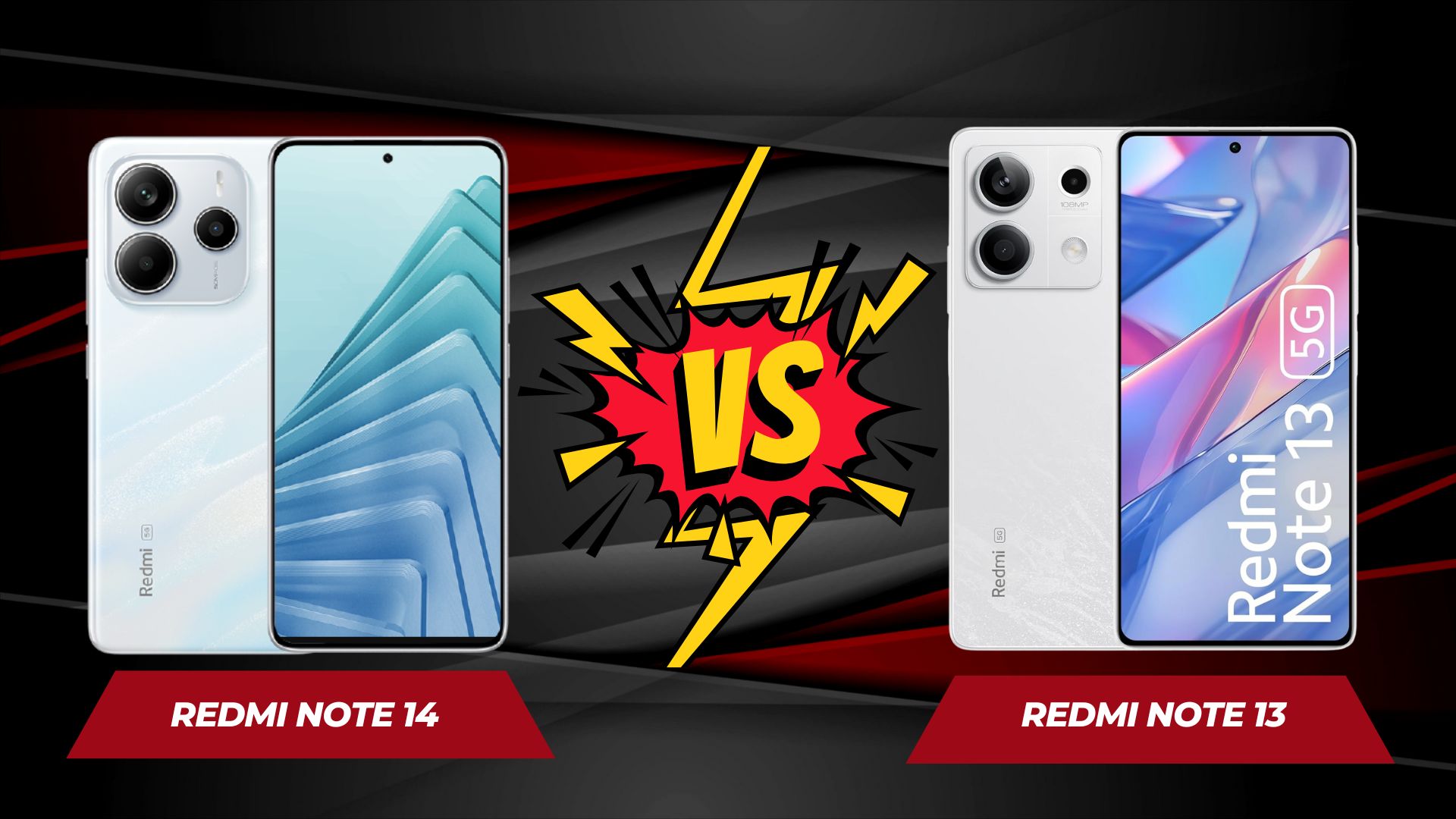
Xiaomi continues its tradition of offering impressive value with its Redmi Note series, and the latest contenders, the Redmi Note 14 and Redmi Note 13, are no different. Both smartphones bring a compelling set of features to the table, making the choice between them a delightful dilemma for budget-conscious consumers. To help you navigate this decision, we present a comprehensive comparison that delves into the nuances of each device.
Design and Build Quality: Redmi Note 14 vs Redmi Note 13
Both phones sport a modern design language with a glass front and a plastic back, providing a comfortable in-hand feel. However, the Redmi Note 14 distinguishes itself with a higher degree of protection against the elements. Its IP64 rating for dust and water resistance offers greater peace of mind compared to the Redmi Note 13’s IP54 rating, which only guarantees protection against dust and splashes. This difference in durability could be a deciding factor for users who frequently find themselves in challenging environments or are prone to accidental spills.
Display: Redmi Note 14 vs Redmi Note 13
Both the Redmi Note 14 and Redmi Note 13 boast a stunning 6.67-inch AMOLED display with a silky smooth 120Hz refresh rate. This combination ensures vibrant colors, deep blacks, and fluid animations for an immersive viewing experience. Furthermore, both displays are fortified with Corning Gorilla Glass 5, safeguarding them against scratches and minor impacts. However, the Redmi Note 14 pulls ahead with a significantly higher peak brightness of 2100 nits, promising exceptional outdoor visibility even under direct sunlight. In contrast, the Redmi Note 13 offers a peak brightness of 1000 nits, which, while respectable, might struggle in extremely bright conditions.
Performance: Redmi Note 14 vs Redmi Note 13
Under the hood, the Redmi Note 14 flexes its muscles with the Mediatek Dimensity 7025 Ultra chipset, built on a 6nm process. This processor promises a noticeable performance upgrade over the Redmi Note 13’s Mediatek Dimensity 6080 chipset, also fabricated on a 6nm process. This translates to smoother multitasking, faster app launches, and improved gaming performance on the Note 14. Both devices utilize UFS 2.2 storage technology, ensuring swift read and write speeds for a responsive user experience. Additionally, they come in various RAM and storage configurations, catering to a wide range of user needs.
Software: Redmi Note 14 vs Redmi Note 13
In terms of software, the Redmi Note 14 takes the lead by shipping with the latest Android 14 operating system, layered with Xiaomi’s HyperOS skin. This gives users access to the newest Android features and optimizations right out of the box. The Redmi Note 13, on the other hand, launches with Android 13 and HyperOS. While Xiaomi has promised 3 major Android upgrades for the Note 13, ensuring long-term software support, the Note 14 has the advantage of starting with the most up-to-date Android version.
Camera System: Redmi Note 14 vs Redmi Note 13
The camera systems on both phones offer unique strengths. The Redmi Note 14 features a 50MP main camera with optical image stabilization (OIS), enabling sharper images in low-light conditions and reducing blur from shaky hands. This is complemented by an 8MP ultrawide lens for capturing expansive landscapes and a 2MP macro lens for close-up photography. The Redmi Note 13, however, boasts a 108MP main camera with a larger sensor size, potentially capturing more detail and light. This is accompanied by an 8MP ultrawide lens and a 2MP depth sensor for creating portrait mode effects with blurred backgrounds. Both phones are capable of recording 1080p video at 30fps from both the rear and front cameras. For selfies, the Redmi Note 14 offers a 20MP sensor while the Redmi Note 13 has a 16MP sensor.
Battery and Charging: Redmi Note 14 vs Redmi Note 13
The Redmi Note 14 packs a slightly larger 5110 mAh battery compared to the Redmi Note 13’s 5000 mAh battery. This difference, while not substantial, could translate to slightly longer usage time on a single charge. More importantly, the Note 14 supports blazing-fast 45W wired charging, significantly reducing the time spent tethered to a power outlet. In contrast, the Redmi Note 13 supports 33W wired charging, which, while still relatively fast, is noticeably slower than the Note 14.
Audio and Connectivity: Redmi Note 14 vs Redmi Note 13
Both smartphones offer a comprehensive suite of connectivity options, including Wi-Fi 802.11 a/b/g/n/ac, Bluetooth 5.3, and NFC (market dependent). They also feature a 3.5mm headphone jack for those who prefer wired audio and support Hi-Res audio for a more immersive listening experience. However, the Redmi Note 14 stands out with its stereo speakers, delivering a richer and more balanced soundstage compared to the mono speaker setup on the Note 13. Both devices include an infrared port, allowing you to control compatible appliances like TVs and air conditioners directly from your phone.
Making the Final Decision
Choosing between the Redmi Note 14 and Redmi Note 13 ultimately comes down to your individual needs and priorities. The Redmi Note 14 presents itself as a more refined and powerful device with its superior processor, enhanced durability, brighter display, faster charging, and stereo speakers. However, the Redmi Note 13 counters with a higher-resolution main camera and the promise of extended software support. By carefully weighing these factors against your budget and usage patterns, you can make an informed decision that best suits your requirements.


















